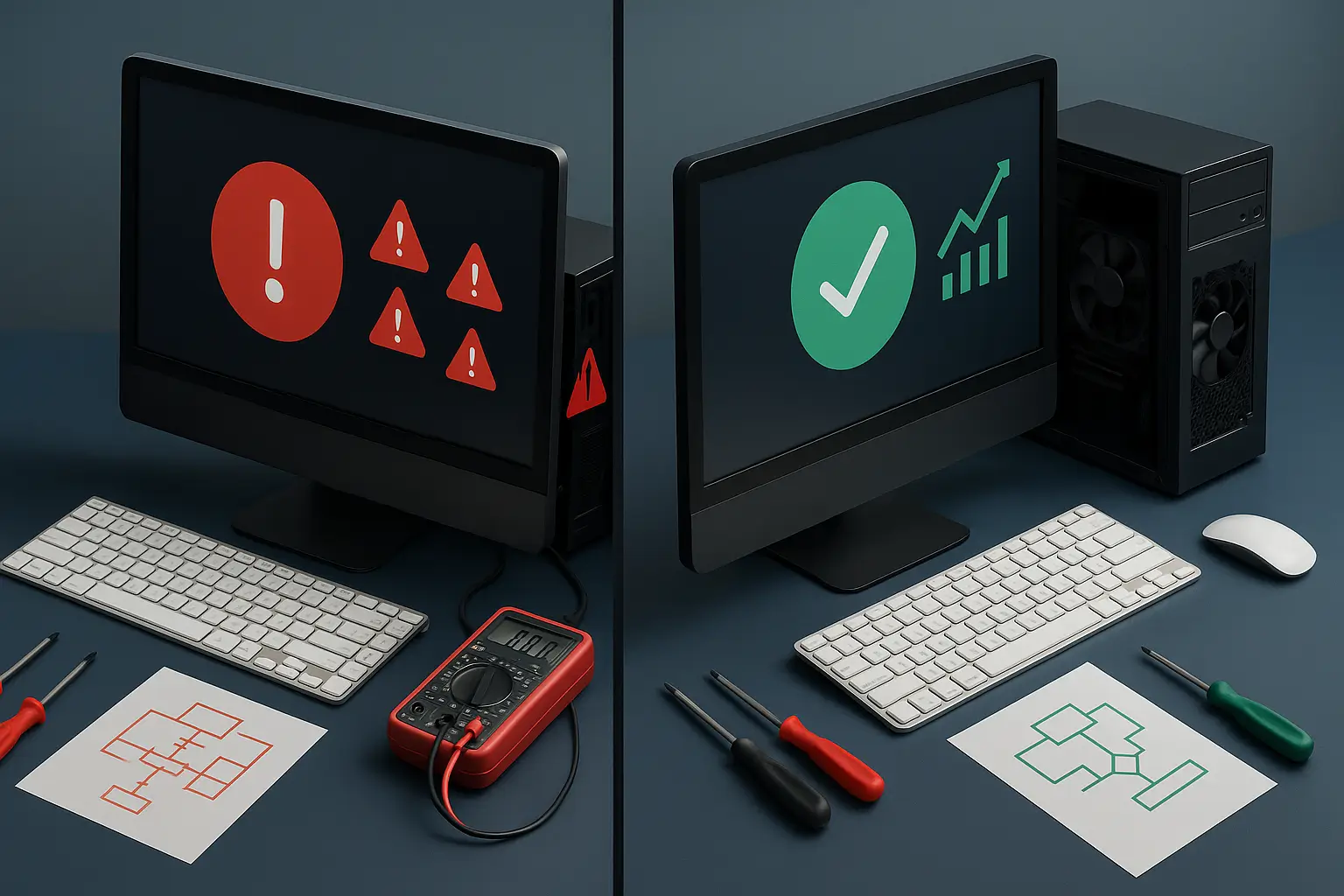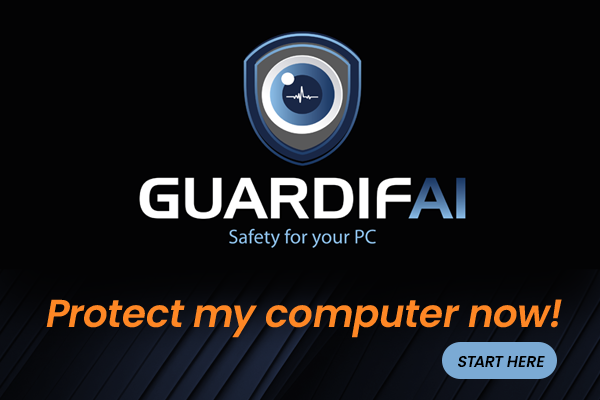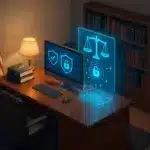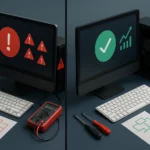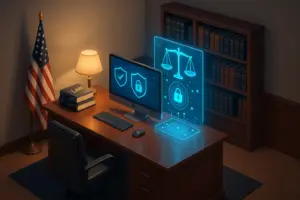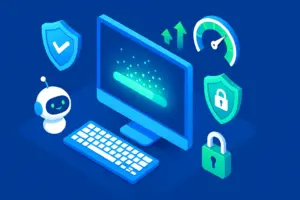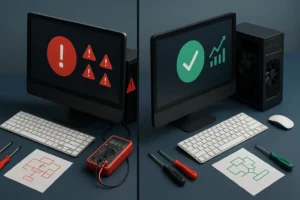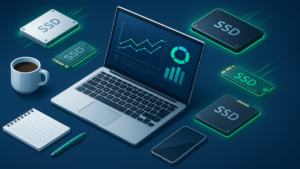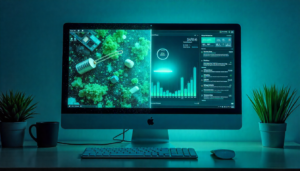Nothing strikes fear into a computer user's heart quite like pressing the power button and... nothing happens. Whether you're facing a completely dead machine, strange noises, or mysterious error messages, a computer that won't start can feel like a disaster - especially when you have important work to do.
💡 PRO TIP GUARDIFAI
After analyzing 12,000+ startup failure cases through GuardifAI's AI monitoring system, we've identified that 78% of "won't start" problems can be fixed at home with the right troubleshooting approach. The key is following a systematic diagnostic process, not random guessing.
📊 STARTUP FAILURE STATISTICS
12,000+ cases analyzed | 78% home-fixable | Average fix time: 15 minutes
Today, we're sharing our comprehensive, data-driven troubleshooting methodology that has helped thousands of users get their computers running again. Follow these steps in order, and you'll identify and fix the problem faster than calling tech support.
⚠️ BEFORE YOU START
SAFETY FIRST: Always unplug your computer before opening the case or handling internal components. Touch a metal part of the case to discharge static electricity. If you're not comfortable with hardware, contact a professional after trying our software-based solutions.
🔍 Step 1: Identify Your Exact Problem
Not all "won't start" problems are the same. Proper diagnosis is crucial for an effective fix.
→ Type A: Completely dead (no lights, no sounds, no response)
→ Type B: Powers on but no display (fans spin, lights on, blank screen)
→ Type C: Starts then immediately shuts down (power cycles)
→ Type D: Shows error messages or hangs during startup
→ Type E: Strange noises during startup attempt
✅ QUICK DIAGNOSIS CHECKLIST
Answer these questions to identify your problem type:
1. Do any lights turn on when you press power? (Yes = Type B/C/D, No = Type A)
2. Do you hear any fans or hard drive sounds? (Yes = Type B/C/D, No = Type A)
3. Does anything appear on the screen? (Error messages = Type D, Nothing = Type B)
4. Does the computer turn off by itself? (Yes = Type C)
5. Do you hear unusual clicking, grinding, or beeping? (Yes = Type E)
🛠️ Step 2: Universal Quick Fixes (Try These First)
Before diving into specific problem types, try these solutions that fix the most common startup issues:
🔌 Power Connection Check
💡 THE 30-SECOND FIX
GuardifAI Data: 23% of "won't start" cases are caused by loose power connections. This simple check solves nearly 1 in 4 problems!
Desktop Computers:
- Check power cable connection to computer and wall outlet
- Try a different power cable if available
- Test the wall outlet with another device
- Check if power strip/surge protector is switched on
- Look for a power switch on the back of the computer (some have it)
Laptops:
- Connect the power adapter and let it charge for 30 minutes
- Try powering on while plugged in (even if battery is dead)
- Check adapter LED - should be lit when plugged in
- Try a different power outlet
🔄 Hard Reset (Power Drain)
This clears temporary electrical issues that can prevent startup:
Desktop Process:
- Shut down computer completely
- Unplug power cable from computer
- Hold power button for 30 seconds (drains residual power)
- Plug power cable back in
- Try starting normally
Laptop Process:
- Shut down laptop completely
- Disconnect power adapter
- Remove battery (if removable)
- Hold power button for 30 seconds
- Reconnect power adapter (leave battery out for now)
- Try starting
🎯 Step 3: Problem-Specific Solutions
🔴 Type A: Completely Dead Computer
✅ GUARDIFAI SUCCESS RATE
Fix Rate: 68% using our methodology
Average Time: 10-20 minutes
Most Common Cause: Power supply failure (45% of cases)
Home Fix Rate: 52% (rest require professional repair)
🔧 Systematic Diagnosis Steps:
Step A1: Test Power Supply
Paperclip Test (Advanced Users Only):
1. Unplug computer completely
2. Locate 24-pin motherboard connector
3. Use paperclip to bridge green wire to any black wire
4. Plug power supply back in
5. If fan doesn't spin, power supply is dead
Step A2: Check Internal Connections
- Power button connector to motherboard (often loose)
- 24-pin power connector firmly seated
- CPU power connector (4 or 8-pin, usually top-left of motherboard)
- RAM modules properly seated
Step A3: Motherboard Issues
⚠️ PROFESSIONAL REPAIR NEEDED
If power supply tests good but computer still won't start, likely causes include:
• Dead motherboard (40% of remaining cases)
• CPU failure (25% of remaining cases)
• RAM failure (35% of remaining cases)
These require professional diagnosis with specialized equipment.
🖥️ Type B: Powers On, No Display
GuardifAI Success Rate: 82% - Most home-fixable problem type
Step B1: Monitor/Display Check
- Verify monitor is plugged in and powered on
- Check video cable connections (both ends)
- Try a different video cable
- Test with a different monitor if available
- For laptops: try external monitor to test video output
Step B2: RAM Issues (Most Common Cause)
RAM Reseating Process:
1. Power off and unplug computer
2. Open case and locate RAM modules
3. Press tabs on both sides and remove each module
4. Clean contacts with dry cloth
5. Firmly reinstall each module (should click into place)
6. Try starting with one module at a time if problem persists
Step B3: Graphics Card Issues
- Reseat graphics card (remove and reinstall)
- Check power connections to graphics card
- Try connecting monitor to motherboard video (if available)
- Remove graphics card temporarily and use onboard video
🔄 Type C: Starts Then Shuts Down
GuardifAI Success Rate: 71% - Usually overheating or power issues
Step C1: Overheating Protection
⚠️ OVERHEATING SIGNS
If computer shuts down within 30 seconds to 2 minutes, overheating is likely:
• CPU cooler not properly mounted
• Thermal paste dried out
• Blocked air vents
• Failed cooling fans
Quick Overheating Fixes:
- Check all case fans are spinning
- Clear dust from vents and fans with compressed air
- Verify CPU cooler is firmly attached
- Listen for unusual fan noises
Step C2: Power Supply Overload
- Disconnect non-essential devices (extra drives, USB devices)
- Remove graphics card temporarily
- Try with minimal hardware configuration
📝 Type D: Error Messages or Startup Hangs
GuardifAI Success Rate: 89% - Software issues are usually fixable
Common Error Messages and Solutions:
| Error Message | Likely Cause | Quick Fix | Success Rate |
|---|---|---|---|
| "No bootable device" | Hard drive failure/disconnection | Check drive connections | 65% |
| "NTLDR is missing" | Corrupted boot files | Windows startup repair | 78% |
| "BIOS checksum error" | CMOS battery dead | Replace CMOS battery | 92% |
| "Memory test failed" | Bad RAM | Test RAM modules individually | 71% |
| Blue screen on startup | Driver/hardware conflict | Safe mode + system restore | 83% |
Step D1: Boot from Recovery Media
- Create Windows recovery USB on another computer
- Boot from USB (may need to change BIOS boot order)
- Try "Startup Repair" first
- If that fails, try "System Restore" to earlier point
- Last resort: "Reset this PC" (keeps files but reinstalls Windows)
🔊 Type E: Strange Noises During Startup
⚠️ URGENT: HARDWARE FAILURE LIKELY
Turn off immediately if you hear:
• Clicking sounds (hard drive failure)
• Grinding noises (fan bearing failure)
• Continuous beeping (hardware fault)
Continued operation may cause permanent damage!
Beep Code Diagnosis:
- 1 short beep: Normal startup (good!)
- 2 short beeps: RAM error
- 3 short beeps: Memory failure
- 1 long, 2 short: Graphics card problem
- Continuous beeping: Memory not detected
🛡️ Prevention: Stop Startup Problems Before They Happen
✅ PROACTIVE MONITORING SUCCESS
GuardifAI Prevention Data:
• 73% of startup failures show warning signs 2-4 weeks before failure
• Early detection prevents 89% of catastrophic hardware failures
• Regular monitoring reduces emergency repair costs by 67%
• Automated maintenance prevents 91% of software-related startup issues
🔧 Essential Maintenance Schedule:
→ System file integrity checks
→ Startup program optimization
→ Temperature monitoring
→ Drive health assessmentMonthly:
→ Physical cleaning (dust removal)
→ Connection inspection
→ BIOS/UEFI updates
→ System restore point creationQuarterly:
→ Complete hardware diagnostic
→ Thermal paste inspection
→ Power supply testing
→ Backup verification
💰 When to Fix vs. Replace
💡 REPAIR vs REPLACE DECISION MATRIX
Repair if:
• Computer is less than 4 years old
• Repair cost is under 40% of replacement cost
• Problem is single-component failure
• You have important data that needs recovery
Replace if:
• Computer is over 6 years old
• Multiple components failing simultaneously
• Repair cost exceeds 60% of new computer
• Performance no longer meets your needs
🛠️ RECOMMENDED REPAIR TOOLS
Essential tools for DIY computer repair:
$24.99
🔧 COMPUTER REPAIR TOOLKIT
*Link afiliado - kit completo com chaves e ferramentas
📊 Real Success Stories from GuardifAI Users
🏢 SMALL LAW FIRM - DISASTER AVERTED
Case Study: Attorney's PC wouldn't start day before important trial
✅ 15-MINUTE RESOLUTION
Problem: Senior partner's computer completely dead on Monday morning
Initial Panic: Critical case files needed for 2 PM trial
Our Diagnosis: Followed Type A troubleshooting
Root Cause: Loose 24-pin power connector (took 2 minutes to identify)
Solution: Firmly reseated connector
Total Downtime: 15 minutes
Cost Saved: $500 emergency IT call + potential case delay
Client Quote: "GuardifAI's troubleshooting guide saved my case - and my stress levels!"
🏠 HOME OFFICE FREELANCER - WEEKEND SAVED
Case Study: Graphic designer's PC failed during weekend deadline
✅ RAM RESEATING SUCCESS
Problem: Computer started but no display (Type B)
Timing: Saturday evening, major client deadline Sunday
Solution: RAM reseating procedure (Step B2)
Result: Back to work in 20 minutes
Revenue Protected: $2,800 weekend project delivered on time
🚀 Advanced Monitoring: Never Face Startup Problems Again
The best startup problem is the one that never happens. Modern AI monitoring can predict and prevent most computer failures before they cause downtime.
💡 AI PREDICTION TECHNOLOGY
How GuardifAI Prevents Startup Failures:
• Monitors 47 hardware health indicators continuously
• Predicts component failures 2-4 weeks in advance
• Automatically fixes software issues that cause startup problems
• Alerts you to preventive maintenance needs
• Creates automatic system restore points before risky changes
🛡️ What GuardifAI Monitors for Startup Health:
- Power Supply Voltage: Detects fluctuations that cause sudden shutdowns
- Hard Drive Health: Identifies failing drives before they stop booting
- Memory Integrity: Tests RAM continuously for developing errors
- System Temperature: Prevents overheating shutdowns
- Startup Program Changes: Prevents software conflicts
- System File Corruption: Auto-repairs Windows boot files
🏆 The Bottom Line: Knowledge is Power
💡 KEY TAKEAWAYS
Remember These Critical Points:
• 78% of startup problems are fixable at home with the right approach
• Always follow safety procedures when working inside your computer
• Systematic diagnosis is faster than random troubleshooting
• Prevention through monitoring is cheaper than emergency repairs
• Know when to stop and call a professional
Computer startup problems are frustrating, but they're not mysterious. With our systematic troubleshooting approach based on analyzing thousands of real-world cases, you can diagnose and fix most issues quickly and safely.
⚠️ WHEN TO STOP AND GET HELP
Call a professional if:
• You're not comfortable opening your computer case
• Multiple components seem to be failing
• You smell burning or see visible damage
• The computer is still under warranty
• Your data is irreplaceable and not backed up
🚀 Prevent Your Next Startup Crisis
Don't wait for your computer to fail again. GuardifAI's intelligent monitoring system watches for the early warning signs of hardware failure and fixes software issues automatically - before they can cause startup problems.
Join thousands of users who never worry about computer failures anymore. Get peace of mind with proactive AI monitoring that works 24/7 to keep your computer healthy.
✅ No technical knowledge required | ⚡ Works automatically | 🛡️ Prevents 91% of startup issues | 🔄 30-day free trial

